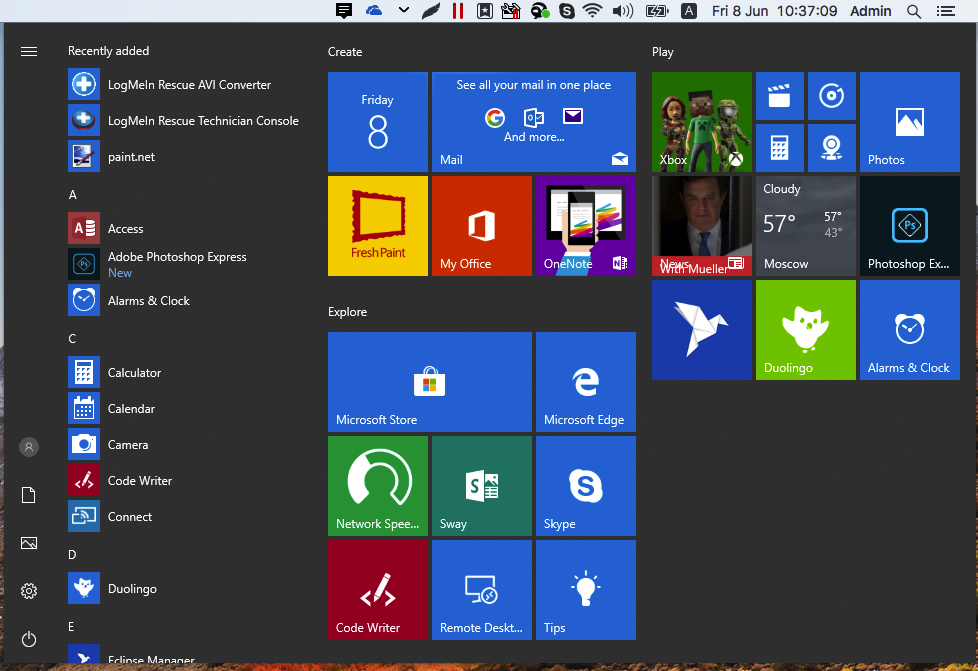
Parallel Program For Mac In Orde To Use Windows
The mail merge pulls information from the mailing list and populates it on your main document, resulting in the merged document—the letter or email or label or Word can pull data from a variety of data sources to perform mail merge. If you don't have a mailing list, you can create one easily during. How to do a mail merge on microsoft word 2018 for mac free. I am trying to send a Word document via mail merge as an email. I have followed the instructions on how to do this, using an existing Excel xlsx document as From Word> About Microsoft Word what is indicated as the present Version & the License type of your Office software? If anything lower than. Microsoft Office (Excel, Word, Outlook) Email Merge. This blog post is really about how to do an email merge using Microsoft Office on a Mac, so here are the steps and considerations. Under Default email reader, select Microsoft Outlook.app. If you find that Mail keeps reverting the default. Mac - Click File, click Save As., enter the document's name in the 'Save As' field, select a save location by clicking the 'Where' box and clicking a folder Open Microsoft Word. The Word app icon looks like a white 'W' on a dark-blue background. How can I perform a mail merge on MS word?
Parallels Desktop for Mac Pro Edition is the easiest and most powerful application to run Windows on Mac for developers, testers, and experienced power users. Specifically tailored for users who need the best performance and extended functionality for running non-Mac applications on Mac. Easily switch between Mac and Windows applications, launch Windows applications from the Mac Dock, and use Mac gestures in Windows. Use the Touch Bar with Windows applications, as well as copy and paste or drag and drop between Windows and Mac.
Apple’s Boot Camp got the most attention recently as a way to run Windows on the new Intel-powered Macs. But at almost the same time, little-known Virginia-based announced a version of its virtualization software,. This software solution for running other PC operating systems is more flexible than Apple’s Boot Camp, and for many users, it may prove to be a better solution. Boot Camp Pros and Cons A bit of background: Apple’s Boot Camp, like an earlier hacker-built solution, lets users partition their Intel-Mac’s hard drive in order to install another operating system (in Boot Camp’s case, Windows XP only) and allow the user to choose to boot into either Mac OS X or the other operating system.
Parallels 11 is a polished virtualisation solution that allows Mac users to switch easily between OS X and Windows apps, regardless of which operating system they were written for. Parallels Toolbox for Mac and Windows 30+ tools in a lightweight, powerful, all-in-one application for Mac ® and PC. Easy to use and economical—a whole suite of tools for a fraction of the cost of individual apps, packaged in one simple interface.
Only one operating system runs at a time, but it gets full use of all the computer’s hardware resources. Emulation Pros and Cons But many Mac owners have long been making use of another way to run multiple operating systems. PC emulation software has long been available for the Mac, with programs like Virtual PC, SoftPC, and GuestPC letting Mac owners install and run a wide range of PC operating systems within a window on their Mac. The Mac operating system is still running allowing the Mac owner to treat the PC operating system and its applications as just another program, switching from one to the other without needing to restart the Mac. The downside: performance.
Emulation requires translating software instructions meant for one CPU into instructions designed for another, and – like translating from Chinese to English – it’s inevitably slower than just working in a single language. Because they are designed at a low level specifically for the PowerPC CPU used on pre-2006 Macs, emulators like Virtual PC and Guest PC don’t run on the new Intel-powered Macs. Virtualization But because these new Macs use the same Intel CPUs as other PCs, there’s no longer any need for those sorts of translations. Instead of emulation, software can make use of virtualization – letting the Intel CPU set up a virtual Intel-powered computer running in a portion of the computer’s memory. Without needing to translate instructions from one CPU to another, performance can be much better – much closer to full speed.